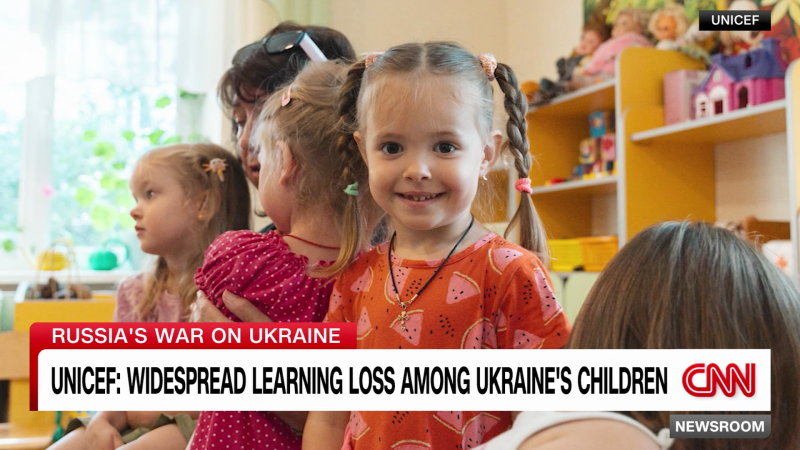
In wartime Ukraine, going back to school means preparing for air raids and huddling in shelters
Kateryna Pylypenko prepared two backpacks for her youngest son’s first day of school on Friday. One with school supplies, and one for the bomb shelter.
As Russia’s brutal and unprovoked assault on Ukraine enters its third academic year, almost 4 million children went back to primary and secondary schools on Friday, according to the country’s education ministry.
According to UNICEF, only about a third of children enrolled in Ukraine will be attending in-person classes this year, with the rest studying at least partially online.
Pylypenko’s two sons, who are 6 and 14, will be going back in person. Their school in Kyiv decided to bring the pupils back in after surveying parents a few weeks ago.
In-person classes involve some risk – Ukraine’s capital has been struck by Russian missiles and drones a number of times in recent months. But Pylypenko said she was keen for her sons to have a school experience that is as close to “normal” as is possible, even though their father, her husband, is currently away fighting in the war.
The first day of school is usually a special occasion in Ukraine. Crowds of parents gather outside the gates, children dress up in their best clothes and present their teachers with flowers.
“We were told that we shouldn’t buy flowers this year, but instead donate to the Ukrainian army,” Pylypenko said. “But I bought a small bouquet for my first-grader anyway. It’s all about the mood.”
“I’m glad that we are in Ukraine and my son is going to the first grade here. It was important for me that we are not in Poland or somewhere else in a foreign country when he starts school,” she said.
“The school is nearby, so I can always get there fast if needed. I am worried though about what it’s going to be like. Whether there will be attacks, whether there will be electricity,” she added.
Hundreds of miles away in Zaporizhzhia, 9-year-old Dmytro Ukrainsky is one of the kids not allowed to return to class. Frequent attacks on the city, near the front lines in southern Ukraine, make in-person education far too dangerous.
Lost childhood
The war has had a horrific impact on millions of children across Ukraine.
According to official data from Ukrainian authorities, 503 children have been killed and 1,117 wounded since Russia’s full-scale invasion began in February 2022. More than 1,100 remain missing, almost 20,000 have been forcibly displaced or deported, and hundreds of thousands are living abroad as refugees.
On Thursday, Ukrainian prosecutors said the country has opened more than 3,000 criminal cases over Russia’s alleged crimes against children in Ukraine, including dozens of torture cases. Moscow has repeatedly denied accusations of torture and human rights abuses.
UNICEF has warned that even children who are physically safe are hurting due to the conflict, struggling with mental health problems and falling behind in their schooling. A UNICEF survey found that a majority of teachers in Ukraine reported deterioration in their students’ skills.
“And it is precisely these children to whom we have no or almost no access who suffer the greatest educational losses,” he said.
Yulia Dolzhanska, who teaches Ukrainian language and literature at a secondary school in Kharkiv, said that it is clear that online learning cannot replace face-to-face interaction. But for many in Ukraine, there simply isn’t another option right now.
Dolzhanska’s school decided to offer both online classes and the opportunity for kids to come in for meetings. “The difficult thing here is that if there is an air raid alarm or, god forbid, explosions, how will the children react to it? Do we go to the shelter with children who are offline? How do we calm down and support the children who are online?” she said.
Gorbachov said that since the beginning of the full-scale conflict last year, Ukraine has invested heavily in making schools safer, building shelters and focusing on improving distance learning. According to the government, 84% of schools are now equipped with bunkers, a requirement for any educational institution that wants to bring students back in.
